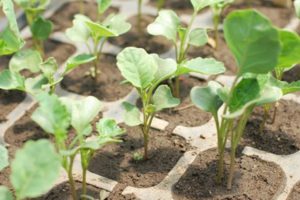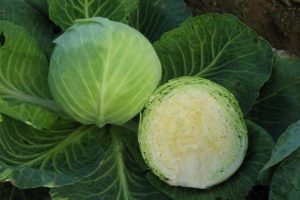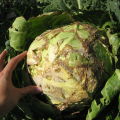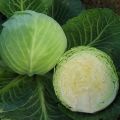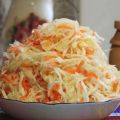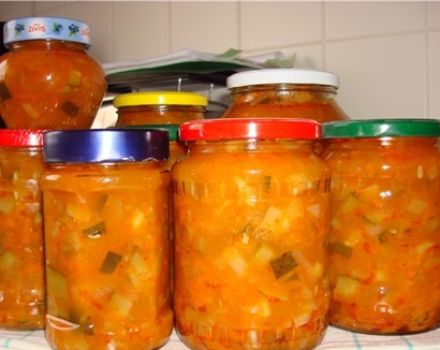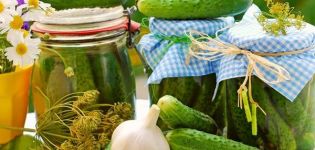What are the varieties of cabbage with names and descriptions
Cabbage is one of the more popular vegetables. Many people use it for pickling and make pickles with salads from it. There are different varieties of cabbage that you can grow on your site.
It contains a huge amount of vitamins and other useful substances that take part in metabolic processes and improve human immunity. It is low in calories, which is why it is often used to treat the gastrointestinal tract and during diets.
Main types
To find out what types of cabbage are, you need to familiarize yourself with their main varieties and names. Types of cabbage and their characteristics will help people without experience to study in more detail the features of these vegetables. There are three main types, which include:
- Heady. It is distinguished by a very overgrown and developed bud, based on a small head of cabbage. It is from him that the fetus begins to form. This species is very popular among vegetable growers and is grown much more often than all other varieties. For cooking, you can use the whole fruit, except the head of cabbage.
- Colored. The formation of the head is carried out with the help of overgrown shoots, which include a large number of formations that outwardly resemble an air soufflé. Cauliflower has an uneven surface and excellent flavor.
- Leafy. The main fruit is formed by leaves that begin to grow from the stem itself. A distinctive feature of kale is that it has no core base at all. This vegetable is eaten whole.
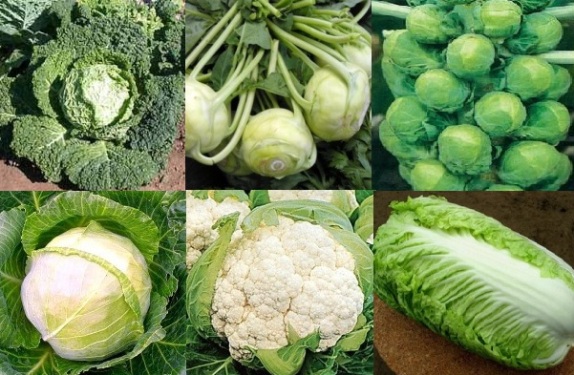
White-headed
Differs in its resistance to low temperatures and love of light and moisture. To grow white cabbage, you need to find a site with the most fertile soil. The heads of the plant can be of various sizes and shapes. They are tapered, flat and round. The weight of the heads of cabbage depends on the variety and cultivation characteristics. It can vary from 0.5kg to 10kg.
It is recommended to grow white cabbage at a temperature of 20 degrees. Young seedlings can withstand short-term frosts, but it is not recommended to grow cabbage in low temperature conditions.
Newly planted seedlings can withstand frosts around -5 degrees. A grown plant can cope with temperatures of at least -8 degrees.
This type of cabbage does not cope very well with high temperatures. If the temperature exceeds 30 degrees, the formation of new heads of cabbage will stop completely. Water the plant regularly to stimulate fruit production. Watering should be moderate for the first few weeks after planting. However, over time, the moisture intake will have to increase.
A distinctive feature of the white plant is light-requiring. If the cabbage is planted in the shade, then it may die over time. Therefore, you should not grow it near tall fruit trees that can cast shadows.
Young seedlings actively suck out nutrients such as phosphorus, nitrogen and potassium from the soil. After transplanting seedlings into open ground, it consumes only nitrogen, and during the formation of heads of cabbage - phosphorus and potassium.
You need to feed the bushes if they are grown in peat or sandy soils. If it was planted in loamy soil, then no top dressing is needed.
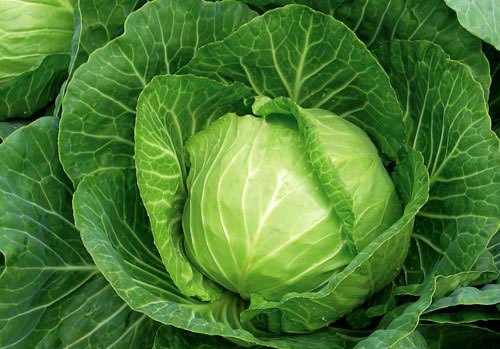
Redhead
If we compare it with white-headed species, then it is distinguished by its resistance to pests, diseases and severe cold. Red cabbage is not very popular in our country. Most often it is grown in non-black earth zones.
It has dense and small heads of cabbage with purple leaves. Sometimes there are varieties with blue or purple colored leaves. The shade of the leaves depends on the coloring matter that is in them - anthocyanin. In addition to color, it also affects the taste of the plant.
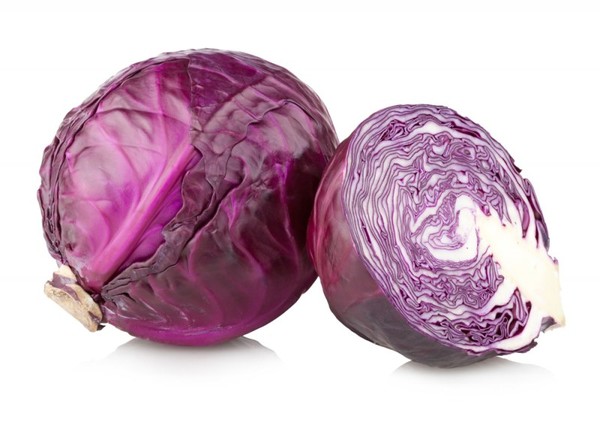
If the bushes are grown in acidic soil, then their leaves turn red. In alkaline soils, they turn blue. In pictures with cabbage grown in different soils, you can see these differences.
Different varieties of red cabbage can ripen at different times. On average, the fruits ripen for about 150 days. However, early varieties can ripen much earlier. It is planted in the same way as medium-late varieties of white cabbage.
It is mainly used in cooking during the preparation of salads and other healthy dishes. Its fruit is a little tough and therefore many people only consume it raw. To make the cabbage less tough, you can pour boiled water over it.
Colored
Contains a huge amount of biological substances and vitamins. It also contains little fiber, so it is recommended for people with liver and gastrointestinal problems. Cauliflower is absorbed by the human body much better than other types of vegetables.
The bushes of the plant have a cylindrical stem, which grows up to 70 cm. The leaves have a greenish tint and elongated petioles, on their surface there is a waxy bloom. Also, during growth, small yellow flowers appear on the bushes. Cauliflower fruits are presented in the form of a cylindrical pod with black or brown seeds. Mature cauliflower bushes look very nice. To be convinced of this, just look at their photos.

It is recommended to grow bushes at a temperature of about 20 degrees. If it drops below 10, then they will develop more slowly. During the cultivation of this plant, you must carefully look after it. Cabbage loves moist soil, so you have to water it every few days. If there is not enough moisture in the soil for three days, then the cabbage heads will begin to crumble. Each square meter of a plot with bushes must be filled with 20 liters of water.
It is recommended to regularly feed the plant. For the first time, you need to fertilize the soil a week after planting the seedlings. For this, mullein, nitrophoska and other mineral fertilizers are used. The next feeding is carried out 2-3 weeks after the first.
Broccoli
It has a lot in common with cauliflower in terms of appearance and taste. The main differences include the amount of nutrients, which are several times more than in other species.
The head of the asparagus cabbage is purple, green, white, and sometimes blue. The largest head is located in the center of the stem. If you remove it, then lateral heads of cabbage will begin to grow from the leaf sinuses.This technique is used to increase yields and extend the timing of fruiting.
The main advantages of broccoli are resistance to temperature extremes and low requirements for soil performance. The only soil that does not suit asparagus kaputa is acidic.
When planting seedlings, certain requirements must be adhered to. A distance of 50-60 cm should be made between the rows, and 30 cm between each bush. You also need to properly care for the cabbage. She needs regular watering, feeding and loosening the soil.
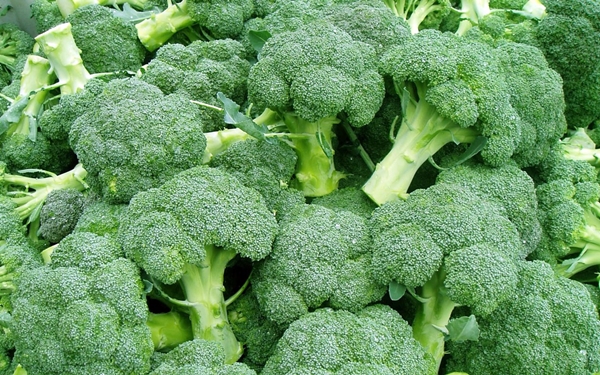
Among vegetable growers, mid-season varieties are especially popular. These include Atlantic and Greenia with a ripening period of about 115 days.
Savoy
This plant is a type of cabbage. In the first year, seedlings form a small stem, which can be cylindrical or spindle-shaped. It is on it that the first heads of the plant are formed. The leaves are colored green, sometimes a faint bloom appears on them, due to which the surface becomes bubbly. Over time, yellow flowers and fruits appear on the bushes.
The taste and appearance are reminiscent of white cabbage. The only major differences are corrugated leaves without veins and loose heads of cabbage.
There are various Savoy cabbage varieties, which differ in terms of ripening. Early varieties ripen within three months after planting. Before boarding, you must carefully study their photos and names. These include:
- Gold - large heads of cabbage weighing more than one kilogram are formed on it;
- Jubilee - cabbage with this name has fruits that are prone to cracking and weigh about 750 grams;
- Julius - the hybrid belongs to the ultra-early ripening varieties, ripens within 80-90 days.
Mid-season varieties may take more than 120 days to ripen. Recommended to grow:
- Melissa - has a high yield and large heads of cabbage weighing about three kilograms;
- Sphere - the fruits of this variety do not crack over time and weigh 1-2 kilograms.
Late varieties ripen for a rather long time - about 150 days. Every lover of late varieties should study these types of cabbage with a photo. Among them, the most common are:
- Verosa - a hybrid known for its resistance to low temperatures;
- Vertu is a variety with very large fruits weighing more than three kilograms;
- Morama - bushes are distinguished by their large heads of cabbage and perfectly smooth leaves.

Beijing
It is the oldest type of cabbage, which is very popular due to its ease of growing. Even when growing a plant in a seedless way, you can get a good harvest.
The bushes are covered with whole sessile leaves, the height of which reaches 30 cm. With their help, a rosette is formed, which has juicy and thick petioles.
It has good resistance to fairly low temperatures. She copes without any problems with small frosts down to -5 degrees. However, in such conditions, the bushes will not be able to develop normally, therefore, to grow them, you need to maintain the temperature within 15-20 degrees. If it exceeds this indicator, then burns will appear on the leaves.
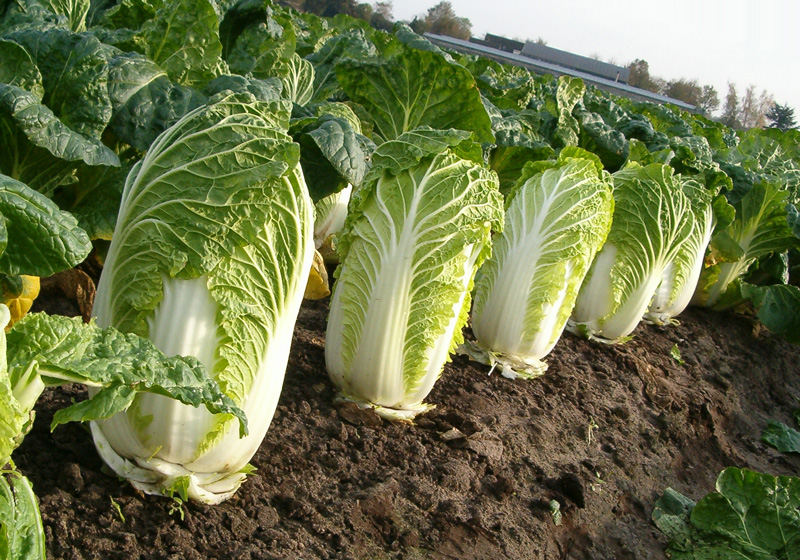
When caring for Peking cabbage, it is necessary to regularly process the bushes, loosen and water the soil. You should also periodically mulch the soil to reduce weeds.
Conclusion
There are a huge number of varieties of cabbage that you can grow on your own in your summer cottage. Before you start planting, it is recommended to study the cabbage varieties with photos and descriptions in advance in order to choose the most suitable plant for yourself.
